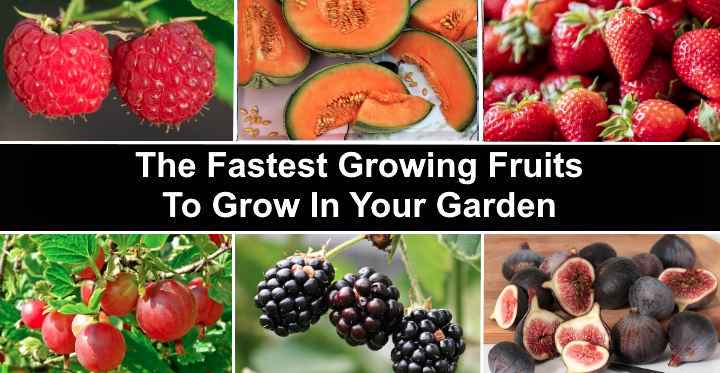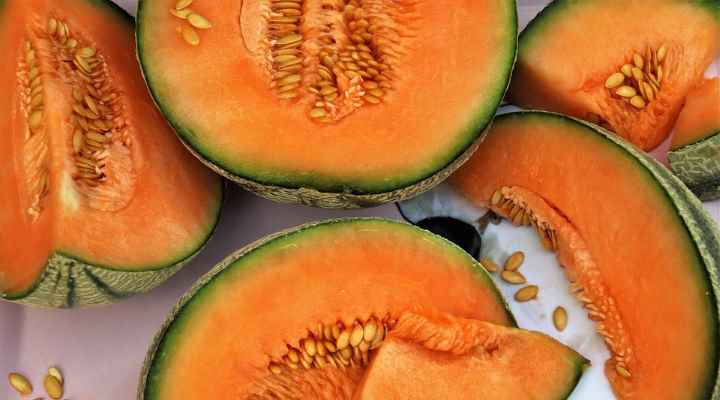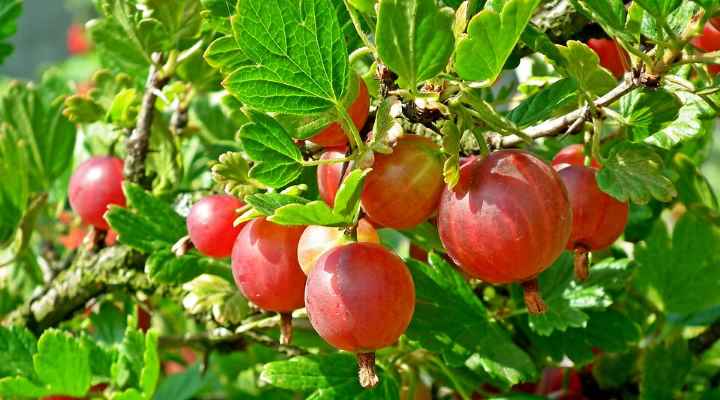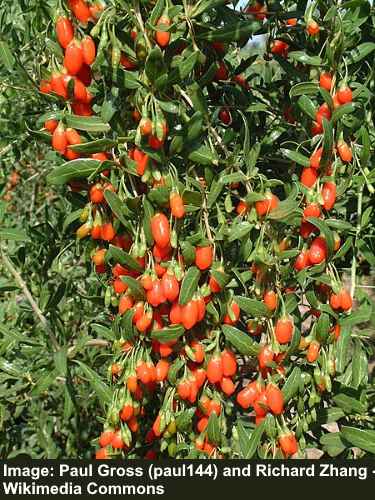The Fastest Growing Fruits (With Pictures)

Fast-growing fruits like strawberries, raspberries, figs, and melons are ideal for getting a bumper crop of juicy, tasty fruits. Many types of fast-growing fruits can be ready in the same season when you plant them. Other types of fruit trees may take two or three seasons to get established but then produce fruit early in the growing season. What’s more, you can grow many fruits fast without much effort.
Of all the types of fruits with fast growth, berries are probably at the top of the list. Strawberries are extremely easy to grow; you can plant them in your garden, hanging basket, or container. They ripen within a few months and may produce fruit twice a year.
The fastest-growing fruit trees are dwarf varieties of apple and pear trees. These varieties grow fairly fast and produce fruits the following season. However, choosing the right variety of fruit trees that produce fruit fast is important.
This article is a guide to creating a fruit garden with plants that produce fast-growing fruits. You will also find useful gardening tips on where to plant these fruit-producing trees, shrubs, and vines.
What Are Fast-Growing Fruits?
The fastest growing fruits are strawberries, raspberries, and melons. Some varieties of fig trees produce fruits in the first year after planting. Most plants with rapid ripening times must be planted early in the season to ripen by late summer.
Tips For Growing Fast-Growing Fruits in Your Garden
Planting fruit trees, bushes, and shrubs at home can be a rewarding experience. The fruit-producing shrubs and trees will allow you to enjoy delicious fruits. However, flowers and fruits also attract pollinators and are a good food source for wildlife. So what are the best types of fruit trees that produce a harvest of fruits in a relatively short time?
Dwarf fruit trees are ideal if you want to enjoy apples and pears a year or two after planting. For example, dwarf trees put more energy into producing fruit rather than growing tall. In addition, some columnar fruit tree varieties produce a small number of fruits in the same year of planting.
Fruiting shrubs and bushes usually produce berries and currants relatively rapidly after planting, and strawberry plants can produce fruit twice a year—in spring and fall.
Here are some general tips to ensure your fruiting trees, shrubs, and bushes grow as fast as possible.
Choose native plants for your climate
Plants always grow better and produce more fruit in their native habitat. Therefore, for the fastest-growing varieties of fruits, choose those native to your region. Also, ensure that the fruit trees or shrubs are suitable for your growing zone.
Grow fast-growing fruiting plants in full sun
For the fastest growth, ensuring fruiting plants get enough sunlight is vital. Most berry shrubs, currants, and fruit trees require six to eight hours of sunshine daily.
Water fruit trees and shrubs regularly
Bushes, shrubs, and trees that produce fruits in a single season usually require plenty of water. Therefore, ensure that the plant grows in well-draining soil and is well-watered throughout warm weather, but never let the ground become soggy or overly moist. Most fruiting plants perform best in well-drained, slightly acidic soil.
Keep fruiting shrubs in pots during the first season
Many potted flowering shrubs that produce berries or currants from garden centers can fruit in the first year. However, it is best not to transplant them immediately. The shock of transplanting could stunt growth and cause the fruits to drop. Instead, keep the shrubs potted for the first year and harvest the fruits at the end of summer.
In the fall, you can transplant the shrub to your garden after collecting the fruits.
For example, potted flowering figs, miniature citrus trees, and some dwarf fruit trees are typically ready to fruit the same year when left to grow in the pot.
The Fastest Growing Fruits (With Pictures)
Let’s look at some of the fast-growing fruits you can plant in your garden.
Strawberry (Fragaria × ananassa)

Strawberries are one of the fastest-growing fruits, with some varieties producing two yearly harvests. On average, strawberry plants take three months to fruit. Ever-bearing varieties of strawberries are the fastest fruits and may appear in the first year of planting. If you get them in the ground by March, you can expect to eat delicious red berry-like fruits by summertime.
If you plant June-bearing strawberries, you can expect the fruits to be some of the first available berries in the year. However, you typically have to wait for a year of growth after planting.
Strawberries are identified as aggregate fruits. They are typically red, with pips or seeds visible on the outside of the fruit. In ideal conditions, strawberries can produce fruit throughout the year.
Related reading: Shrubs with red berries.
Melons (Cucumis)

Melons are on the list of the fastest growing fruits because they take three to four months to ripen after planting from seed. Therefore, to enjoy the large juicy berries early in the season, you should plant melons in spring as soon as any threat of frost has passed. For melons to grow faster, give about 24 to 30 sq. ft. (2.2 – 2.7 sqm) per plant.
There are many varieties of melons suitable for growing in all types of climates. However, melons require plenty of sunlight, heat, and water to enjoy juicy fruits early in the season. Therefore, the large fruits may not be ready as early in the season in cooler climates.
Melons are recognized by their thick, leathery skin surrounding juicy flesh that can be white, orange, pale yellow, or red.
Raspberry (Rubus)

You can enjoy raspberries in early summer in the same year of planting. The fastest-growing varieties of raspberries are primocane-bearing types. Also called fall-bearing raspberries, these plants bear fruit as early as late summer when planted in spring. The bushy plant continues fruiting until the first frost.
If you want to enjoy raspberries early in the season, plant floricane-bearing raspberry plants. These are also called summer-bearing plants and produce some of the first berries in the season. However, the canes only start fruiting in the second year of planting.
Raspberry plants are shrubs with arching canes that bear small, edible fruits. The canes typically have thorns, although there are thornless varieties, and can be either erect or trailing. The flowers are usually white or pinkish in color, with the fruits turning a deep red when ripe. Raspberries are sweet and juicy, making them a popular addition to many dishes.
Related reading: Types of berries.
Blackberry (Rubus subg. Rubus)

Like raspberries, varieties of fast-growing blackberries produce delicious fruits a few months after planting. According to researchers, fruits on these early-blooming primocane-bearing blackberry plants can appear as early as June, depending on the climate. However, it’s best to wait until the dark blackberries look plump before picking.
Most blackberry varieties grow fairly rapidly from spring. They are typically ready for harvesting from late June through September, and a plant can produce fruit for three to four weeks.
When harvesting blackberries, it’s vital only to pick ripe ones. Also, blackberries perish easily; therefore, you must pick them as they ripen. And unlike raspberries, you must pull the central plug with the fruit rather than leave it on the cane.
Gooseberry (Ribes hirtellum)

Gooseberries are fast-growing fruits because they mature about ten weeks after pollination. Gooseberries are mildly tart to sweet berries with a rounded shape and dangle from thorny bushes. The juicy berries measure 0.5” (13 mm) in diameter and can be pink, purple, red, or pale green.
Like many fruiting shrubs, gooseberry plants produce fruits the second year after planting. Therefore, you may find that the second-year crop is limited. However, by the third year, a single gooseberry bush should produce around 3 lbs. (1.4 kg) of fruit annually.
To speed up gooseberry fruit growth and increase yield, it’s vital to keep the ground moist, prune every fall or winter, and protect the thorny shrubs from hard frosts.
Honeyberry (Lonicera caerulea)

Honeyberries are known for their early fruiting and bumper crops. A one-year-old shrub can produce berries at least two weeks before strawberries mature. The fruiting shrubs produce berries for two to three weeks in late spring and early summer. In ideal conditions, honeyberry plants can produce fruits for up to 30 years.
Also called haskap berry or fly honeysuckle, honeyberry plants are deciduous, fruiting shrubs growing 4 to 5 ft. (1.2 – 1.5 m) tall. They have arching branches and produce fragrant white flowers in early spring. The fast-growing honeyberry fruits look like oblong blueberries and taste like a cross between blueberries and raspberries.
Goji Berry (Lycium barbarum)

Goji berries are super-delicious fruits that can be harvested in the same season as planting. To enjoy these superfood berries, it’s important to start growing a goji shrub from cuttings taken from mature plants. However, to ensure the shrubs fruit the same year, purchasing a potted flowering shrub from a reputable nursery is best.
Also known as wolfberries, Goji berries are bright red or deep-orange, oval-shaped fruits. The juicy red fruits taste like sour cherries or cranberries and can be used in savory or sweet foods.
Goji berry is a fast-growing, deciduous shrub that grows 3 to 6 ft. (1 – 1.8 m) tall. The shrubs bloom with dainty star-shaped purple flowers before fruiting.
It’s good to remember that goji shrubs may take two to four years to fruit when planted as a cutting. Growing from seed, you may have to wait around five years for delicious red fruits to appear.
Currants (Ribes)

Blackcurrants (Ribes nigrum) and redcurrants (Ribes rubrum)
Shrubs producing currants like blackcurrants and redcurrants are fast-growing and require little maintenance. The fruiting shrubs should grow in full sun and moist soil for the fastest growth and the highest yield. You can expect to harvest red, white, or black currants from June through summer.
To enjoy currants the same year after plating, you should buy potted plants from a local nursery. In many cases, it’s best to leave the fruit-producing shrubs in the pot for the first year.
Currant-producing shrubs grown from cuttings may only start producing fruit in the year after planting. However, you can expect a yield of juicy currants of up to 10 lbs. (4.5 kg) from a single bush.
Of the different types of currants, blackcurrants are the easiest to grow. They are also an excellent choice for containers if you want to grow fruiting plants on a balcony, patio, or container garden.
Fig (Ficus carica)

Some varieties of fig trees produce fruits in the first year after planting. Usually, first-year fig fruits are possible if you have a late winter and plant the potted fig trees early in the season. Typically, you can expect a limited harvest of small juicy fruits in late summer or early fall.
After fig trees are established in the garden for at least a year, you can expect the figs to be ready from the end of summer until the end of September. The delicious crop of soft fruits is ready for picking when they become dark purple and come away easily from the tree.
Fig trees are fast-growing deciduous, fruit-producing plants that grow 23 to 33 ft. (7 to 10 m) in height. Fig leaves are thick and leathery with three to five deep, rounded lobes. The tear-shaped fruits emerge green in late spring and ripen to deep purple by August. In cooler climates, the fig harvest may be as late as October.
Pear (Pyrus)

Asian pears (Pyrus pyrifolia) are also known by the name nashi pears
Several varieties of pear trees are fast-growing fruit trees. However, if you want to enjoy pears two years after planting, it’s best to plant varieties of Asian pears. Or, you could plant fast-fruiting dwarf pears that may produce fruits a year after planting. These dwarf varieties also perform well in containers.
You can expect varieties of Asian pears to ripen on the tree between July and September. The shape of the fruit resembles an apple, rather than the traditional “pear shape.” Early-ripening Asian pears have a sweet taste and crunchy texture.
Growing pear trees from seed is a notoriously long process until they start fruiting. Therefore to speed up the process and enjoy pears a year after planting, it’s best to buy grafted seedlings from a reputable nursery. Additionally, check the number of chill hours required to ensure a good fruit yield.
Related reading: Varieties of flowering pear trees.
Columnar Apple Tree (Malus domestica cultivars)

Do you want to enjoy fresh apples from a tree the same year as planting? If so, plant two or three columnar apple trees in your sunny backyard. You can expect columnar apple trees to fruit in the fall after planting them in spring. Columnar apple trees grow 8 to 10 ft. (2.4 – 3 m) tall and 2 ft. (0.6 m) wide.
Here are some handy tips for enjoying faster-growing apple trees in your garden:
- Choose a fast-growing apple variety like Golden Delicious or Red Delicious. Or Lodi and Gravenstein are also vigorous apple tree varieties with delicious fruit.
- Buy a variety of apple trees two years old. You may still have to wait a couple of years for it to produce fruit, but fruit production happens faster.
- Give young apple trees plenty of water—about two inches per week—to help the trees establish strong, robust roots.
- Prune about one-third of the current year’s growth in winter. This will promote faster growth and a higher yield of fresh fruit the following year.
Related articles:
